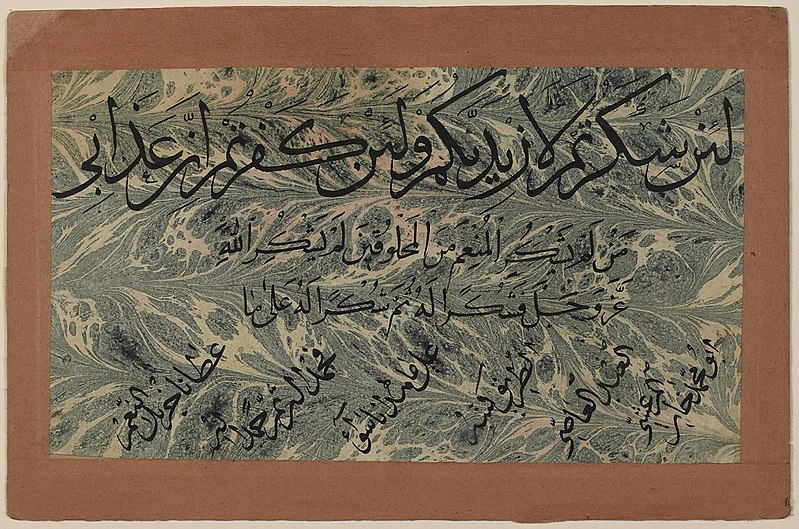Datei:Quran 14.jpg

Größe dieser Vorschau: 800 × 529 Pixel. Weitere Auflösungen: 320 × 212 Pixel | 640 × 423 Pixel | 1.024 × 678 Pixel | 1.280 × 847 Pixel | 2.932 × 1.940 Pixel
Originaldatei (2.932 × 1.940 Pixel, Dateigröße: 2,28 MB, MIME-Typ: image/jpeg)
Dateiversionen
Klicke auf einen Zeitpunkt, um diese Version zu laden.
| Version vom | Vorschaubild | Maße | Benutzer | Kommentar | |
|---|---|---|---|---|---|
| aktuell | 02:51, 25. Jun. 2009 |  | 2.932 × 1.940 (2,28 MB) | Calliopejen1 | {{Information |Description=Dimensions of Written Surface: 20 (w) x 11.5 (h) cm Script: thuluth, Persian naskh, and tawqi' This fragmentary calligraphic panel includes a verse from the Qur'an (14:7) and praises to God executed in thuluth, Persian naskh, |
Dateiverwendung
Die folgenden 3 Seiten verwenden diese Datei:
Globale Dateiverwendung
Die nachfolgenden anderen Wikis verwenden diese Datei:
- Verwendung auf af.wikipedia.org
- Verwendung auf as.wikipedia.org
- Verwendung auf bg.wikipedia.org
- Verwendung auf bs.wikipedia.org
- Verwendung auf en.wikipedia.org
- Verwendung auf eo.wikipedia.org
- Verwendung auf fr.wikipedia.org
- Verwendung auf hu.wikipedia.org
- Verwendung auf kk.wikipedia.org
- Verwendung auf lt.wikipedia.org
- Verwendung auf nl.wikipedia.org
- Verwendung auf ru.wikipedia.org
- Verwendung auf sv.wikipedia.org
- Verwendung auf vi.wikipedia.org